Rosters are finally set for the 2021-22 college basketball season -- at least we think that's the case. With Western Kentucky announcing it was signing Cincinnati transfer Keith Williams, every transfer in ESPN's top 100 rankings has picked his destination. And with Emoni Bates announcing his commitment to Memphis last week, every prospect in the ESPN 100 has chosen a college or the G League.
So, barring a late reclassification or last-minute transfer, the landscape is pretty much settled for the upcoming campaign. And the movement of the past month has brought us a new name for the Final Four and national championship conversations.
In the July update to these rankings, Memphis was nowhere to be found. The Tigers brought back three starters from a team that won the NIT championship and signed three high-major transfers and a solid high school recruiting class. But they also had just one win over an NCAA tournament team in 2020-21 and lost three players who started at least 11 games. So, there were a lot of questions. After the past month, there are far fewer questions.
Penny Hardaway landed elite recruits Emoni Bates and Jalen Duren, both projected top-five picks in the next two NBA drafts. The addition of Duren on his own would have brought Memphis into the top 20. But getting Bates away from Oregon and the G League gives the Tigers as much on-paper talent as anyone in the country -- and puts them squarely in the national discussion.

1. Gonzaga Bulldogs
Previous: 1
The preseason hype for Andrew Nembhard seems to be quieter than last season, when he was cleared to play just days before the season began and was viewed as the missing player for the Zags' national championship quest. But after a campaign in which Nembhard moved into the starting lineup for the final two months and helped lead the Bulldogs to the national title game, most of the attention in Spokane, Washington, is focused on Wooden Award favorite Drew Timme, potential No. 1 draft pick Chet Holmgren and two other five-star recruits coming into town.
But Nembhard is still a projected NBA draft pick and should be one of the best point guards in the country in 2021-22. His production was a little inconsistent last season, which is to be expected for the fifth option on the offensive end. Nembhard is smooth and has great size for his position. And he seemed to take a step forward with his perimeter shooting: He made 37.5% of his attempts in West Coast Conference play.
Projected starting lineup:
Nolan Hickman (No. 22 in ESPN 100)
Andrew Nembhard (9.1 points per game)
Hunter Sallis (No. 14 in ESPN 100)
Chet Holmgren (No. 1 in ESPN 100)
Drew Timme (19.0 PPG)
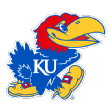
2. Kansas Jayhawks
Previous: 2
Kansas has all the players needed to win a national championship this season. The Jayhawks had one major hole entering the offseason, and that was at the point guard spot; so, Bill Self went out and landed Arizona State transfer Remy Martin, maybe the best transfer in the country. Self also signed ESPN 100 point guard Bobby Pettiford, who originally committed to Louisville, and Drake transfer Joseph Yesufu, a physical guard who can make plays in the backcourt. So, that's good to go.
The biggest key now? A healthy and effective David McCormack. McCormack was dominant for stretches last season, giving Kansas a clear focal point on the interior it could throw the ball to and get a bucket. Much of that happened during a 12-game stretch in conference play during which McCormack averaged 15.8 points and 6.8 rebounds. But there were some consistency issues. In Kansas' nine losses, the big man averaged 11.8 points and 5.1 boards; in the team's 20 wins with McCormack (he missed KU's Big 12 tournament win), he averaged 14.2 points and 6.6 boards.
Projected starting lineup:
Remy Martin (19.1 PPG at Arizona State)
Christian Braun (9.8 PPG)
Ochai Agbaji (14.2 PPG)
Jalen Wilson (12.1 PPG)
David McCormack (13.4 PPG, 6.1 rebounds per game)
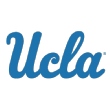
3. UCLA Bruins
Previous: 3
It feels like UCLA's group of newcomers is being overlooked somewhat, which is understandable given that the Bruins bring everyone back from last season's Final Four team. But Mick Cronin went out and filled a couple of key holes that should make UCLA deeper and more consistent during the 2021-22 season.
Peyton Watson is a projected top-10 pick in ESPN's 2022 draft rankings after shining at the Iverson Classic workouts in the spring. Watson is an excellent two-way player who can score going to the rim or from the perimeter and has continued to improve throughout his high school career; he should compete with Jules Bernard for a starting spot. ESPN 100 prospect Will McClendon should make an early impact on the defensive end and fit well with Cronin's system. Then there's Rutgers graduate transfer Myles Johnson, one of the best defenders in the Big Ten and someone who brings size, physicality and toughness after averaging 8.5 rebounds and 2.4 blocks last season.
Projected starting lineup:
Tyger Campbell (10.2 PPG)
Johnny Juzang (15.5 PPG)
Peyton Watson (No. 10 in ESPN 100)
Jaime Jaquez Jr. (12.1 PPG)
Cody Riley (9.8 PPG)

4. Villanova Wildcats
Previous: 4
Jay Wright has four staples returning to the fold from last season: Collin Gillespie, Justin Moore, Caleb Daniels and Jermaine Samuels. All four started at least 20 games last season, and all four will slot back into their usual positions. But Wright will need some of his role players to step forward if the Wildcats are going to live up to a top-five ranking and compete for a national championship.
We've spoken about the frontcourt at length throughout the offseason, with sophomore Eric Dixon and freshman Nnanna Njoku the primary options to replace Jeremiah Robinson-Earl. But there are several newcomers and returning rotation members who will fight for minutes on the perimeter. Brandon Slater brings length and versatility on the defensive end, while Bryan Antoine has yet to show the form that made him one of the nation's most sought-after scorers coming out of high school. Trey Patterson is an intriguing name; he was a top-40 recruit but enrolled for the second semester last season and played in just two games. Patterson has size and good shooting ability.
Projected starting lineup:
Collin Gillespie (14.0 PPG, 4.6 RPG)
Justin Moore (12.9 PPG)
Caleb Daniels (9.6 PPG)
Jermaine Samuels (12.0 PPG)
Eric Dixon (3.0 PPG)

5. Texas Longhorns
Previous: 5
How Chris Beard doles out minutes and keeps everyone happy will be one of the more intriguing storylines to follow during the opening weeks of the season. The Longhorns bring back two nailed-on starters in Andrew Jones and Courtney Ramey, while also adding six of the top 30 transfers in ESPN's transfer rankings and bringing in a top-30 recruit in Jaylon Tyson. In an ideal world, Beard's first three off the bench would probably be Vanderbilt transfer Dylan Disu, who nearly averaged a double-double in the SEC; Creighton transfer Christian Bishop, who shot 69% inside the arc and started every game for a Sweet 16 team; and Devin Askew, a former five-star point guard who started as a freshman at Kentucky. And the early buzz coming out about Tyson has been very positive, as well. If the newcomers click immediately and everyone buys into their role right off the bat, there are going to be very few teams that can match up with the Longhorns in terms of talent.
Projected starting lineup:
Marcus Carr (19.4 PPG at Minnesota)
Courtney Ramey (12.2 PPG)
Andrew Jones (14.6 PPG)
Timmy Allen (17.2 PPG at Utah)
Tre Mitchell (18.8 PPG at UMass)
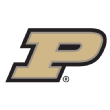
6. Purdue Boilermakers
Previous: 6
Given how Zach Edey played at the FIBA U19 World Cup in Latvia in July, will Matt Painter put any thought into potentially starting the 7-foot-4 Canadian player alongside preseason All-American Trevion Williams? Edey was dominant at the World Cup, averaging 15.1 points, 14.1 rebounds and 2.3 blocks while totaling six double-doubles in seven games -- including a 16-point, 16-rebound performance in a semifinal loss to the United States. Edey was highly effective as a freshman, averaging 8.7 points, 4.4 rebounds and 1.1 blocks in just 14.7 minutes. But he only started two games, and they were the only two games Williams didn't start.
Painter has utilized two-big lineups in the past, with Matt Haarms alongside Williams a couple of seasons ago and Isaac Haas next to Caleb Swanigan and/or AJ Hammons for a few seasons. Purdue has four other players who started at least 23 games last season, and that group doesn't include Jaden Ivey, the easiest pick to become a breakout star nationally this season. Depth and lineup versatility won't be an issue.
Projected starting lineup:
Eric Hunter Jr. (8.5 PPG)
Jaden Ivey (11.1 PPG)
Sasha Stefanovic (9.3 PPG)
Mason Gillis (5.2 PPG)
Trevion Williams (15.5 PPG, 9.1 RPG)

7. Memphis Tigers
Previous: Unranked
With the addition of Emoni Bates, Penny Hardaway has countless personnel combinations he can use this season. The below quintet is my favorite group, for a few reasons. We've heard how Bates is going to play a Hardaway-like role as the team's point guard, but since he isn't a natural point guard and can sometimes struggle with his ballhandling, a secondary playmaker is going to be useful -- and that's where Earl Timberlake comes in. Timberlake struggled as a freshman at Miami, but he was a projected one-and-done draft pick before last season and can initiate off the bounce like he did at the high school level. Timberlake and DeAndre Williams also are excellent passers. Landers Nolley II and Bates can provide the shooting, and then there's Jalen Duren on the interior. Duren is going to be a dominant force, especially defensively and on the glass. These five -- even without a true point guard -- also could be absolutely dominant as a group defensively, given their size, length and versatility.
Projected starting lineup:
Emoni Bates (No. 3 in ESPN 100)
Earl Timberlake (9.3 PPG at Miami)
Landers Nolley II (13.1 PPG)
DeAndre Williams (11.7 PPG)
Jalen Duren (No. 7 in ESPN 100)
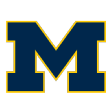
8. Michigan Wolverines
Previous: 7
The best defense in the Big Ten last season shouldn't see much of a drop-off this season, despite Michigan losing four of its top six players. In fact, the Wolverines are bringing in at least two high-level individual defenders in Coastal Carolina transfer DeVante' Jones and five-star freshman Moussa Diabate. Jones averaged nearly three steals per game last season, and then he boosted his defensive reputation at the G League Elite Camp in June due to his length and ability to jump passing lanes. Diabate was one of the best rebounders in the 2021 class, and he is a good rim protector due to his size, length and physicality. Combine the return of Eli Brooks (a very good perimeter defender), Hunter Dickinson (who can wall up with his 7-foot-1 size) and Brandon Johns Jr. (who played a key role in the NCAA tournament run) and Juwan Howard should once again have one of the better defenses in the country. Projected top-five pick Caleb Houstan will make more of an impact with his skilled offensive game, but his 6-foot-8 size should be an asset too.
Projected starting lineup:
DeVante' Jones (19.3 PPG at Coastal Carolina)
Eli Brooks (9.5 PPG)
Caleb Houstan (No. 7 in ESPN 100)
Brandon Johns Jr. (4.9 PPG)
Hunter Dickinson (14.1 PPG, 7.4 RPG)
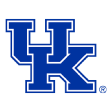
9. Kentucky Wildcats
Previous: 8
On paper, the five I've listed below as Kentucky's projected starting lineup would seem to make the most sense, with one potential issue: shooting. Sahvir Wheeler led the SEC in assists and was one of the best playmakers in the league, but he made 22.8% of his 3s last season. TyTy Washington has 6-foot-4 size and was a five-star recruit, but in five games at the Geico Nationals and the NIBC Invitational last season, he shot 25.7% from 3. Keion Brooks Jr. brings versatility and experience, but he has made 11 3-pointers in 47 career games. Davidson transfer Kellan Grady is a terrific shooter, but it wouldn't surprise me if John Calipari went with Iowa transfer CJ Fredrick or senior Davion Mintz for long stretches alongside Grady on the wings. Fredrick was one of the best shooters in college basketball over the past two seasons, making 47% of his 3s. Mintz made the most 3s on the Wildcats last season, and he is a career 36% 3-point shooter. It might be difficult to bench Wheeler or Washington, but the offense could flow better with two shooters.
Projected starting lineup:
Sahvir Wheeler (14.0 PPG, 7.4 assists per game at Georgia)
TyTy Washington (No. 12 in ESPN 100)
Kellan Grady (17.1 PPG at Davidson)
Keion Brooks Jr. (10.3 PPG, 6.8 RPG)
Oscar Tshiebwe (8.5 PPG, 7.8 RPG at West Virginia)
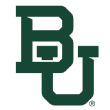
10. Baylor Bears
Previous: 9
While the Baylor teams of the past couple of seasons were elite on the offensive end, the biggest question in terms of keeping the momentum going in Waco, Texas, is whether the new-look Bears will be as good defensively. On paper, Scott Drew has capable replacements for Jared Butler, Davion Mitchell, MaCio Teague and Mark Vital: Arizona transfer James Akinjo was one of the best point guards in the Pac-12; Adam Flagler and Matthew Mayer played key bench roles last season; and Kendall Brown is a five-star recruit.
But can this team dominate at the defensive end? In Mitchell and Vital, Drew had two of the elite individual defenders in the country. Mitchell was the best on-ball defender we've seen in a few years, while Vital was physical and versatile. Those two anchored a group that ranked fourth nationally in adjusted defensive efficiency in 2020 and in the top 25 last season. It's going to be a difficult act to follow, even if Drew does have more size to throw at times this season.
Projected starting lineup:
James Akinjo (15.6 PPG at Arizona)
Adam Flagler (9.0 PPG)
Kendall Brown (No. 15 in ESPN 100)
Matthew Mayer (8.2 PPG)
Jonathan Tchamwa Tchatchoua (6.3 PPG, 5.0 RPG)

11. Duke Blue Devils
Previous: 10
Prior to last season, Mark Williams was generating some positive preseason hype, with some murmurs he could be a sneaky one-and-done candidate. While Williams did finish the season on a high note, he opted to return to Durham, North Carolina, for his sophomore campaign -- and he is No. 30 in ESPN's early 2022 NBA draft rankings. A 7-foot center, Williams averaged 16.7 points, 7.8 rebounds and 1.7 blocks over the final six games of the season, while shooting 74.6% from the field. It was a stretch that came out of nowhere, given that he averaged 3.8 points and 3.3 rebounds over his first 17 games, shooting 56.3% from the field. He is a terrific offensive rebounder, obviously efficient around the rim and an adept shot-blocker. If Williams can carry his late-season momentum into the 2020-21 campaign, there will be few frontcourts with as much size and talent as the Blue Devils. Williams should combine with 6-foot-10 Paolo Banchero and versatile 6-foot-6 forward A.J. Griffin to give opposing teams nightmares.
Projected starting lineup:
Jeremy Roach (8.7 PPG)
Wendell Moore Jr. (9.7 PPG)
A.J. Griffin (No. 26 in ESPN 100)
Paolo Banchero (No. 3 in ESPN 100)
Mark Williams (7.1 PPG, 4.5 RPG)

12. Oregon Ducks
Previous: 11
Oregon would have obviously moved up in the rankings had it landed Emoni Bates, but the Ducks are still well-stocked on the perimeter and could conceivably go with a smaller lineup featuring Eric Williams Jr. and Quincy Guerrier as the lone players up front. But Dana Altman will likely hope either top-10 freshman Nate Bittle or returnees N'Faly Dante or Franck Kepnang can become a consistent factor down low. Dante has only played in 18 games through two seasons due to injuries and eligibility issues, but the former five-star prospect has shown flashes, highlighted by a 22-point game against Florida A&M, followed by a double-double against Washington last season. His main issue? He is recovering from a torn ACL and isn't practicing in full just yet.
Kepnang had arguably his best game in the NCAA tournament loss to USC, scoring eight points in 11 minutes; but his biggest impact on the season came on the defensive end, blocking 18 shots in just 136 minutes played. Bittle is a highly touted recruit but needs to add strength; he will create matchup nightmares for opponents due to his shooting ability.
Projected starting lineup:
Will Richardson (11.3 PPG)
De'Vion Harmon (12.9 PPG at Oklahoma)
Jacob Young (14.1 PPG at Rutgers)
Eric Williams Jr. (10.0 PPG)
Quincy Guerrier (13.7 PPG at Syracuse)
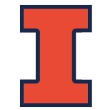
13. Illinois Fighting Illini
Previous: 12
While Brad Underwood will have the nation's most dominant physical presence anchoring the team down low, much of the Fighting Illini's success -- especially late in games -- came via All-American Ayo Dosunmu. Unlike Kofi Cockburn, Dosunmu opted to keep his name in the NBA draft, and therefore, Underwood will need a new go-to guy late in games to create shots for himself and others. The most likely option is Andre Curbelo.
A wizard with the ball in his hands, Curbelo averaged more than four assists despite not starting a single game and playing 21.5 minutes per contest. In the eight games he played at least 27 minutes -- a pretty good estimate for a starter's minutes -- Curbelo averaged 12.4 points, 5.5 rebounds and 5.6 assists. He has elite vision, is outstanding off the dribble and gets into the lane consistently. Curbelo's one big issue is perimeter shooting. He made just five of his 31 3-point attempts last season, with three of those makes coming in the first seven games of the season.
Projected starting lineup:
Andre Curbelo (9.1 PPG)
Trent Frazier (10.2 PPG)
Da'Monte Williams (5.5 PPG)
Jacob Grandison (4.6 PPG)
Kofi Cockburn (17.7 PPG)

14. Arkansas Razorbacks
Previous: 13
The key to the Razorbacks' SEC championship hopes this season will be Miami transfer Chris Lykes. Lykes, a 5-foot-7 point guard, spent the first four seasons of his career in Coral Gables, Florida, but played in just one NCAA tournament game -- a first-round loss to Loyola Chicago his freshman year. A dynamic playmaker off the dribble since his high school days, Lykes steadily improved his 3-point shooting and cut down on his turnovers during his time at Miami, becoming a far more efficient offensive player. He seemed poised for his most productive season yet as a senior, totaling 31 points and 11 assists through two games, shooting 5-for-11 from 3-point range. But Lykes went down with an ankle injury and ultimately missed the rest of the season. Now healthy, Lykes has the keys to Eric Musselman's offense. He will bring a completely different dimension than Jalen Tate did last season (besides being almost a foot shorter), given Lykes' inclination to attack with speed off the dribble.
Projected starting lineup:
Chris Lykes (15.5 PPG at Miami)
Davonte Davis (8.5 PPG)
Au'diese Toney (14.4 PPG at Pittsburgh)
Stanley Umude (21.6 PPG at South Dakota)
Jaylin Williams (3.7 PPG, 4.7 RPG)
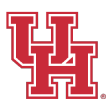
15. Houston Cougars
Previous: 14
Houston's quest to return to the top of the AAC standings (after finishing second to Wichita State last season) got much more difficult after Memphis' additions this month, but the Cougars have enough players of their own to stake their claim as league favorite. Kelvin Sampson is 5-1 against the Tigers since Penny Hardaway took over in 2018, with four of those six games being decided by three points or fewer. Both matchups last season went down to the final minute, with Houston's Tramon Mark hitting a half-court buzzer-beater to win the first meeting and Justin Gorham scoring six points in the final 72 seconds to knock Memphis out of the AAC tournament by two points in the second matchup.
This season will see a contrast in styles between the two teams. We mentioned Memphis' size earlier, while Houston's offensive production will primarily come from its perimeter players. Marcus Sasser and Mark return, while Kyler Edwards is known from his time at Texas Tech. Cal State Bakersfield transfer Taze Moore might be flying under the radar; he was a first-team All-Big West performer and brings size, versatility and outstanding defensive ability.
Projected starting lineup:
Marcus Sasser (13.5 PPG)
Tramon Mark (8.0 PPG)
Kyler Edwards (10.1 PPG at Texas Tech)
Fabian White Jr. (6.3 PPG)
Reggie Chaney (4.6 PPG)
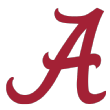
16. Alabama Crimson Tide
Previous: 15
Given Alabama's propensity to play fast, shoot a ton of 3-pointers and rely heavily on its deep and loaded perimeter group, the Crimson Tide's lack of proven production up front isn't a huge concern. But it's at least worth noting. The two players who started consistently in the frontcourt last season, Herb Jones and Jordan Bruner, are both gone. The player who filled in for Bruner while he was injured, Alex Reese, is gone. And James Rojas, who played 30 games last season, underwent injury for a torn ACL in June.
The lone frontcourt returnee with notable experience is sophomore Juwan Gary, who saw his role increase dramatically in the NCAA tournament, playing at least 20 minutes in all three games and averaging 6.7 points and 5.3 rebounds. In his first 26 games of the season, Gary averaged 8.3 minutes, 3.7 points and 2.7 rebounds. Nate Oats is bringing in options, though. Furman transfer Noah Gurley was an all-league performer in the Southern Conference, showing efficient inside-outside offensive game, while Canada native Charles Bediako was a top-40 recruit and enjoys a very high ceiling.
Projected starting lineup:
Jahvon Quinerly (12.9 PPG, 3.2 APG)
J.D. Davison (No. 13 in ESPN 100)
Jaden Shackelford (14.0 PPG)
Noah Gurley (15.4 PPG at Furman)
Charles Bediako (No. 33 in ESPN 100)

17. North Carolina Tar Heels
Previous: 16
While the addition of Marquette transfer Dawson Garcia in early July raised the likelihood that Hubert Davis would continue the two-big lineups favored by his predecessor, it should also be a more versatile group than in the past. And given the Tar Heels' schedule during the first month, that ability to adapt will be useful.
In the first three weeks of the season, North Carolina will face Purdue, either Villanova or Tennessee and then Michigan. Purdue will test the Tar Heels on the interior with Trevion Williams and Zach Edey, while the Wildcats and Volunteers will likely play smaller. Michigan could go a number of different ways. But Garcia and Oklahoma transfer Brady Manek should enable Davis to use bigger lineups and still match up effectively. Garcia can make plays with the ball in his hands, hit shots from the perimeter and defend using his length and 6-foot-11 size. Meanwhile, Manek is 6-foot-9, but he made around two 3-pointers a game at a 38% clip during his four seasons in Norman.
Projected starting lineup:
Caleb Love (10.5 PPG, 3.6 APG)
R.J. Davis (8.4 PPG)
Kerwin Walton (8.2 PPG)
Dawson Garcia (13.0 PPG at Marquette)
Armando Bacot (12.3 PPG, 7.8 RPG)

18. Tennessee Volunteers
Previous: 17
Tennessee made an under-the-radar roster addition last week, with the signing of New York point guard Zakai Zeigler. Zeigler played with the New Heights Lightning grassroots program on the Nike EYBL circuit in July, boosting his stock from an unheralded recruit to one with offers at all levels. He stands just 5-foot-10, but he was consistently impressive in July, averaging 12.4 points and 4.8 assists while shooting 44.4% from 3-point range. Zeigler should provide depth behind top-ranked freshman point guard Kennedy Chandler, who is expected to have the rock in his hands from day one.
The Volunteers shouldn't be short of ballhandling this season, after turning the ball over on at least 18% of possessions the past two seasons. Chandler, Zeigler, returning starter Santiago Vescovi, Auburn transfer Justin Powell and versatile forward Josiah-Jordan James can all make plays with the ball in their hands.
Projected starting lineup:
Kennedy Chandler (No. 8 in ESPN 100)
Justin Powell (11.7 PPG at Auburn)
Victor Bailey Jr. (10.9 PPG)
Josiah-Jordan James (8.0 PPG)
John Fulkerson (9.5 PPG)

19. Ohio State Buckeyes
Previous: 18
Offense was rarely an issue for the Buckeyes last season, with OSU ranking in the top five nationally in adjusted offensive efficiency and scoring fewer than one point per possession on just six occasions all season. But without leading scorer Duane Washington Jr. and relatively dependable double-figure scorer CJ Walker, Chris Holtmann will need a couple of guys to step up and provide some reliable production next to E.J. Liddell.
Justice Sueing should handle some of those duties, after averaging around 14 points in two seasons at California and 10.7 last season for the Buckeyes. On the perimeter, it will likely come down to top-40 recruit Malaki Branham or Louisiana transfer Cedric Russell. Seth Towns was that type of player at Harvard, but he hasn't quite returned to his Ivy form due to injury. And while Justin Ahrens can really shoot, he doesn't offer much else offensively; through three seasons, he has attempted 233 3-pointers and 24 2s. Branham is long and physical and has generated some summer buzz, while Russell can make shots.
Projected starting lineup:
Jamari Wheeler (6.8 PPG at Penn State)
Justin Ahrens (5.7 PPG)
Justice Sueing (10.7 PPG)
E.J. Liddell (16.2 PPG)
Kyle Young (8.6 PPG)
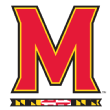
20. Maryland Terrapins
Previous: 19
The Terrapins lost Aaron Wiggins to the NBA draft near the July deadline, meaning they had a scholarship available, and they also a need for some veteran depth on the wings. It wasn't a top-five recruit that Mark Turgeon picked up in late summer but Old Dominion transfer Xavier Green. Green redshirted his freshman season with the Monarchs and then played four seasons, so he has plenty of college experience. He shot 40.6% from 3 as a sophomore and averaged 12.8 points and 4.2 rebounds as a junior, before seeing his scoring production dip last season. Green started every single game in each of the previous three seasons and ranked near the top of Conference USA in minutes in each of the past two seasons. I don't expect him to play nearly as much in the Big Ten, but without Wiggins and Darryl Morsell, the Terps needed another player on the perimeter. Expect Green to battle with Hakim Hart on the wing.
Projected starting lineup:
Fatts Russell (14.7 PPG at Rhode Island)
Eric Ayala (15.1 PPG)
Hakim Hart (7.1 PPG)
Donta Scott (11.0 PPG)
Qudus Wahab (12.7 PPG, 8.2 RPG at Georgetown)
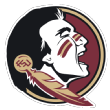
21. Florida State Seminoles
Previous: 20
We're used to seeing Leonard Hamilton and Florida State roll out bigger lineups and overwhelm teams with their physicality and length. The Seminoles have ranked inside the top 30 nationally in block percentage over 11 of the past 13 seasons and in the top 40 nationally in defensive 2-point percentage in nine of those seasons. They ranked No. 1 the past two years in KenPom's average height stat and ranked outside the top seven in that category just twice in the past 13 seasons (10th and 12th, respectively). I say all that because I think the Seminoles could be more effective playing a bit smaller this season.
Houston transfer Caleb Mills might be the team's best scorer right off the bat, while Jalen Warley and Matt Cleveland were both top 60 recruits in the 2021 class. Meanwhile, Anthony Polite is the team's best shooter. All four can play on the perimeter; would Hamilton play all four together consistently? It would be a change in philosophy, but it's something to monitor.
Projected starting lineup:
Caleb Mills (9.8 PPG at Houston)
Jalen Warley (No. 59 in ESPN 100)
Matt Cleveland (No. 28 in ESPN 100)
Anthony Polite (10.1 PPG)
Malik Osborne (5.9 PPG, 4.5 RPG)
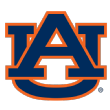
22. Auburn Tigers
Previous: 21
It might take some time for the Tigers to mesh, but Bruce Pearl will have as much talent as anyone in the country, especially in the frontcourt. ESPN draft analyst Jonathan Givony released his top 100 for the 2022 draft last week, and Allen Flanigan, Jabari Smith and Walker Kessler were all ranked inside the top 50. Flanigan was the second highest in ranked returning college players at No. 19, while Smith was No. 7 overall. Kessler, a former top-15 recruit, was No. 43. Only one team -- Gonzaga -- had more players ranked inside the top 100.
There will be questions in the backcourt, particularly at the point guard spot, but Georgia transfer K.D. Johnson will provide plenty of perimeter scoring. He averaged 13.5 points for the Bulldogs as a freshman, despite not starting a single game and averaging just 22.6 minutes. In a bench role, Johnson scored at least 20 points on four occasions and got to the free throw line at a top-five rate in the SEC.
Projected starting lineup:
Wendell Green Jr. (15.8 PPG, 5.0 APG at Eastern Kentucky)
K.D. Johnson (13.5 PPG at Georgia)
Allen Flanigan (14.3 PPG)
Jabari Smith (No. 5 in ESPN 100)
Walker Kessler (4.4 PPG at North Carolina)

23. Oklahoma State Cowboys
Previous: 22
I've gotten a few questions about my projected lineup for the Cowboys, and I'm certainly not wedded to the group you see below. Playing Kalib Boone and Moussa Cisse together would bring dominant interior defense, but it's likely difficult for the two to line up next to each other consistently given where the game is headed in 2021. If Mike Boynton wants more scoring pop, he can insert former five-star guard and McDonald's All American Bryce Thompson, who was one of the best scorers in the 2020 class before playing an inconsistent role at Kansas as a freshman. Another option is Bryce Williams, an underrated player for the Cowboys; he is experienced and super physical and can contribute at both ends of the floor. Williams started 19 games last season and was a key cog during Oklahoma State's 8-1 stretch late in the season, scoring in double figures four times in an eight-game span and dishing out at least three assists in five of those.
Projected starting lineup:
Isaac Likekele (9.1 PPG)
Avery Anderson III (12.2 PPG)
Matthew-Alexander Moncrieffe (9.0 PPG)
Kalib Boone (9.4 PPG)
Moussa Cisse (6.6 PPG at Memphis)

24. Virginia Tech Hokies
Previous: 23
Virginia Tech's Nov. 24 matchup with Memphis in Brooklyn on Thanksgiving eve picked up a bit more heat when Emoni Bates committed to the Tigers. It's now the biggest test on the Hokies' nonconference schedule, which could feature at least four NCAA tournament teams. In addition to Memphis in the NIT Season Tip-Off, the Hokies will face Xavier -- which should go dancing this season -- or Iowa State while in New York. Right after that, Virginia Tech heads to College Park to face Maryland in the Big Ten/ACC Challenge -- and also has St. Bonaventure in the Hall of Fame Shootout in Charlotte, North Carolina, in mid-December. The Hokies jump-started their season a year ago with a win over Villanova during the opening weekend of the season; and wins over the Wildcats and Virginia likely kept them in the field of 68 despite playing just three games between Feb. 6 and the start of the NCAA tournament. They'll have more chances to boost their résumé this season.
Projected starting lineup:
Storm Murphy (17.8 PPG, 4.3 APG at Wofford)
Hunter Cattoor (8.5 PPG)
Nahiem Alleyne (11.1 PPG)
Justyn Mutts (9.5 PPG, 6.4 RPG)
Keve Aluma (15.2 PPG, 7.9 RPG)
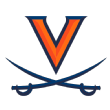
25. Virginia Cavaliers
Previous: 25
I just can't bring myself to drop a Tony Bennett-coached team out of the top 25. Here are the Cavaliers' ACC finishes since 2013-14: first, first, second, fifth, first, first, second (tied), first. All were in the top 25. Some of those teams weren't overly talented on paper. Granted, this is an entirely new challenge for Bennett, but until one of his teams fails to live up to expectations or exceed them, I can't count him out.
It won't take too long for us to find out whether the Cavaliers have enough talent to remain relevant nationally. They head to Houston on Nov. 16 to face an experienced Cougars team with second-weekend NCAA tournament hopes again, and then have the Legends Classic in New Jersey against Providence, Georgia and Northwestern. That's a field Virginia should be able to handle. If the Cavaliers come out of November with three or four losses and look completely lost, it might be time to reassess. For now, a core of Kihei Clark, Reece Beekman, Armaan Franklin and Jayden Gardner is enough to convince me.
Projected starting lineup:
Kihei Clark (9.5 PPG, 4.5 APG)
Reece Beekman (4.7 PPG)
Armaan Franklin (11.4 PPG at Indiana)
Jayden Gardner (18.3 PPG at East Carolina)
Francisco Caffaro (1.2 PPG)
Next in line:
Texas Tech Red Raiders (previous: No. 24)
St. Bonaventure Bonnies (previous: Next in line)
UConn Huskies (previous: Next in line)
Michigan State Spartans (previous: Next in line)
Colorado State Rams (previous: Next in line)
Dropped out: Texas Tech (No. 24), Belmont Bruins (Next in line)
